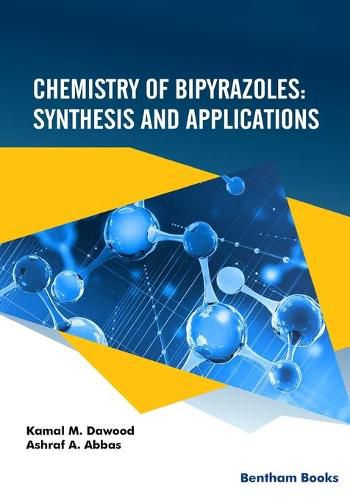Readings Newsletter
Become a Readings Member to make your shopping experience even easier.
Sign in or sign up for free!
You’re not far away from qualifying for FREE standard shipping within Australia
You’ve qualified for FREE standard shipping within Australia
The cart is loading…






Chemistry of Bipyrazoles: Synthesis and Applications covers the synthetic pathways for all types of bipyrazoles. 5 chapters cover bipyrazole systems, N, N- and N, C-bipyrazoles, namely 1,1"-bipyrazole, 1,3"-bipyrazole, 1,4"-bipyrazole, 3,3"-bipyrazoles, 3,4"-bipyrazoles and 4,4"-bipyrazoles The contents explain several types of reactions: 1) condensation reactions of hydrazines with tetracarbonyls, dihydroxydicarbonyl compounds or pyrazole-based difunctional compounds; 2) 1,3-dipolar cycloaddition of pyrazole-based hydrazonoyl halides with activated methylene compounds; 3) metal catalyzed cross-coupling reactions. The book concludes with a chapter that details the applications of bipyrazole derivatives in different industries. Information about advanced concepts used in chemical engineering such as metal-organic frameworks (MOFs) and corrosion inhibition are highlighted.
The book contents are presented in an easy-to-understand manner suitable for readers in organic chemistry at senior levels of education and industry expertise. Each chapter is supplemented with detailed references.
$9.00 standard shipping within Australia
FREE standard shipping within Australia for orders over $100.00
Express & International shipping calculated at checkout
Chemistry of Bipyrazoles: Synthesis and Applications covers the synthetic pathways for all types of bipyrazoles. 5 chapters cover bipyrazole systems, N, N- and N, C-bipyrazoles, namely 1,1"-bipyrazole, 1,3"-bipyrazole, 1,4"-bipyrazole, 3,3"-bipyrazoles, 3,4"-bipyrazoles and 4,4"-bipyrazoles The contents explain several types of reactions: 1) condensation reactions of hydrazines with tetracarbonyls, dihydroxydicarbonyl compounds or pyrazole-based difunctional compounds; 2) 1,3-dipolar cycloaddition of pyrazole-based hydrazonoyl halides with activated methylene compounds; 3) metal catalyzed cross-coupling reactions. The book concludes with a chapter that details the applications of bipyrazole derivatives in different industries. Information about advanced concepts used in chemical engineering such as metal-organic frameworks (MOFs) and corrosion inhibition are highlighted.
The book contents are presented in an easy-to-understand manner suitable for readers in organic chemistry at senior levels of education and industry expertise. Each chapter is supplemented with detailed references.